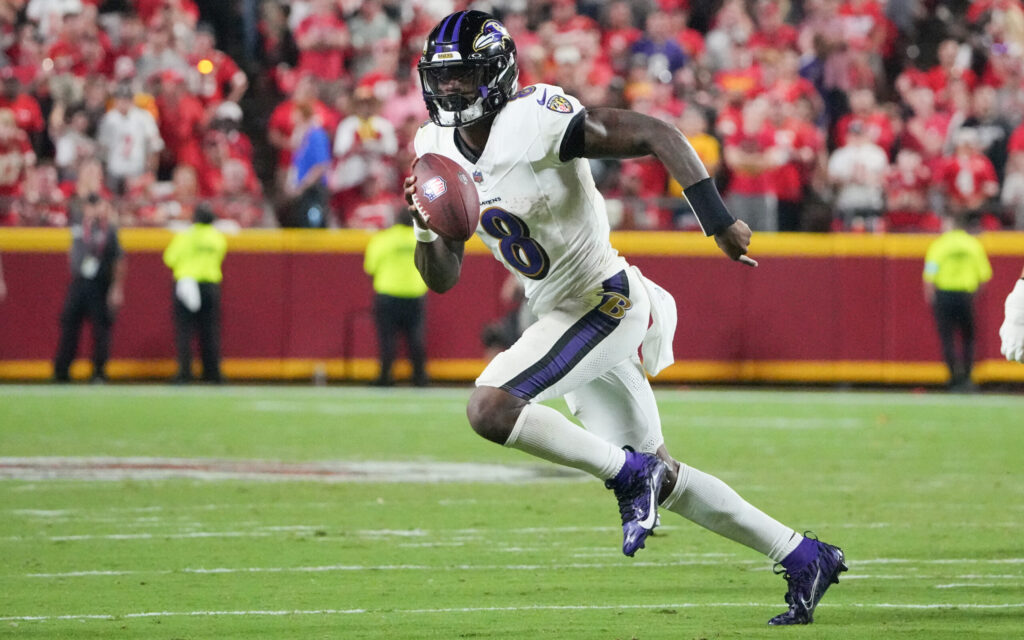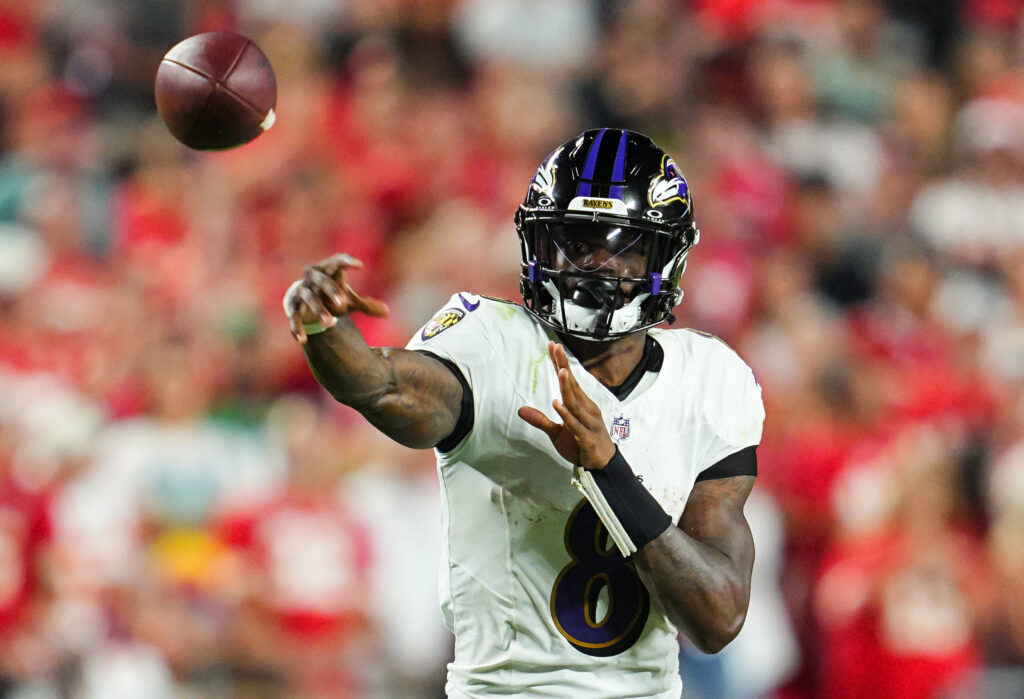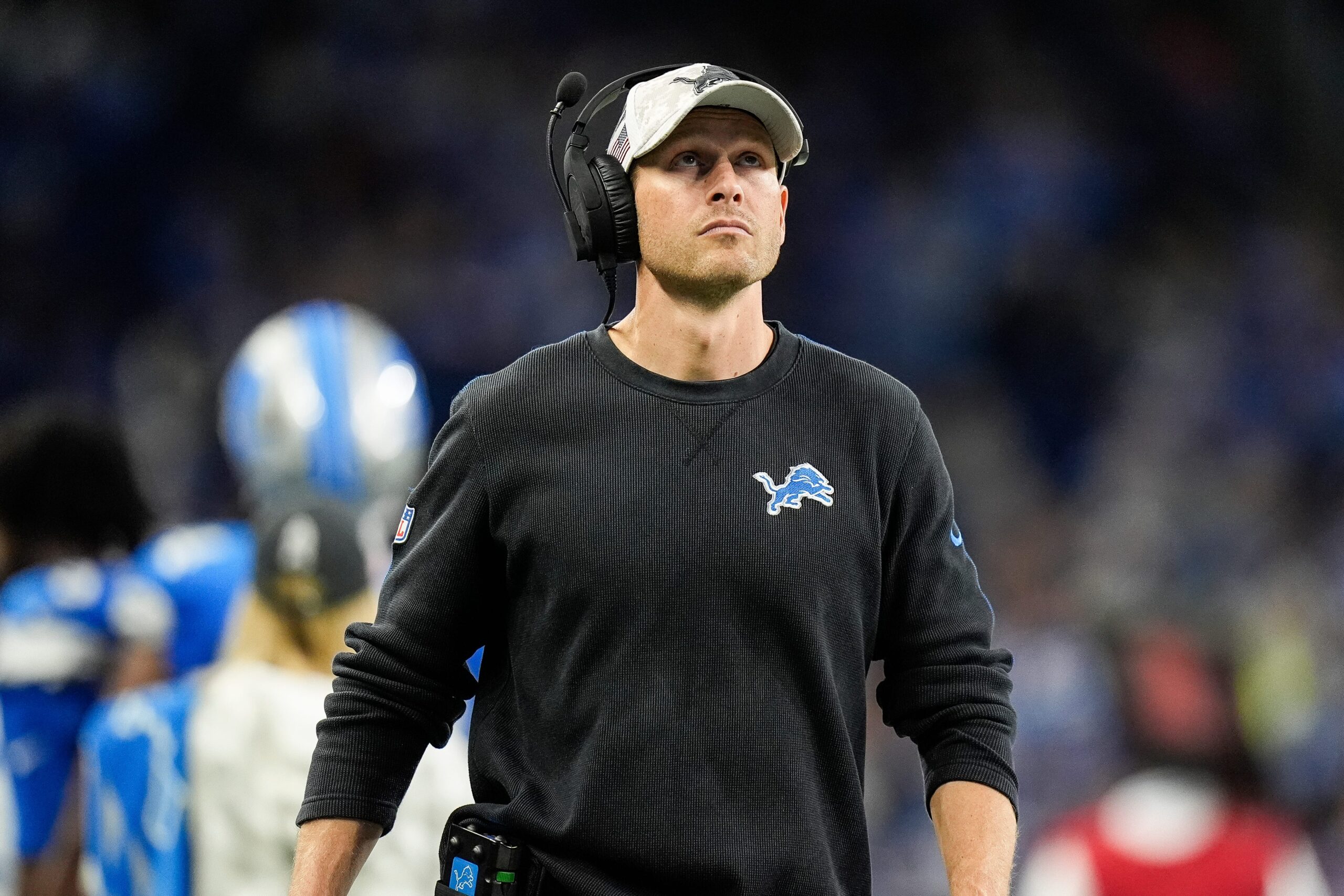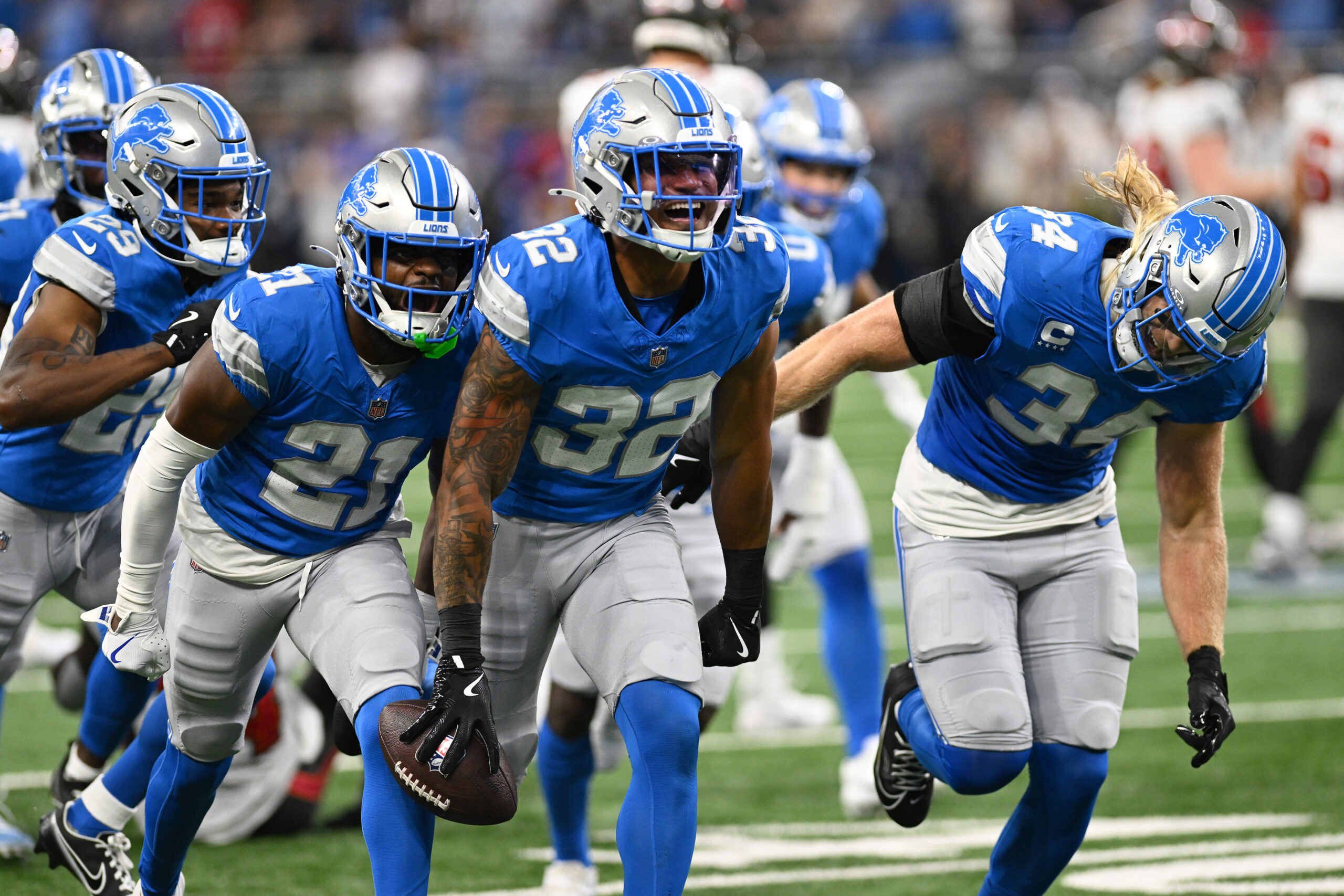NFL Analysis
9/6/24
7 min read
How Should We Feel About The Ravens Offense After Week 1?

The Baltimore Ravens fell to the Kansas City Chiefs 27-20 in the 2024 season opener. A near last-second touchdown that would have led to a Baltimore 2-point conversion attempt to win the game was called back due to Isaiah Likely’s toe being on the back line.
Leading up to that final play, the Ravens had an uneven performance on offense, especially in the passing game. Baltimore averaged -0.02 EPA per dropback, per TruMedia, as Baltimore struggled to pass protect and get open down the field.
The first dropback of the game set the tone for what was to come.
Passing Game Struggles
Baltimore's first offensive play set the tone for the rest of the night pic.twitter.com/YsIJIat57M
— Dan Pizzuta (@DanPizzuta) September 6, 2024
Handling and expecting that type of pressure forced Lamar Jackson to get the ball out quickly, often behind the line of scrimmage. In the first half, Jackson had an average depth of target of 0.8 and an average depth of completion of 1.5.
Much of that was due to how the Chiefs defended the Ravens. When Kansas City dropped back into Quarters coverage, Jackson was willing to check the ball down at the top of his drop, and nothing was open downfield.
Against Quarters, Jackson had a 1.6-yard aDOT and 45.5 percent of his passes went to running backs. While that was not the most exciting way to play, it worked out. Jackson averaged 0.25 EPA per play against that coverage. The short completions kept the ball moving, at least.
Another reason why Jackson was so willing to check the ball down and not wait for things to open down the field was that the Ravens committed more resources to keep blockers in, leaving fewer receivers running routes. Often, the Chiefs left them little choice.
Take this play where Kansas City shows between six and seven players on the line of scrimmage. Jackson brought in Likely as an extra blocker from the outside, but at the snap, the Chiefs drop out into coverage — including LB Drue Tranquill playing as a deep-half safety— and only bring four.
Kansas City still created pressure on the play.
This is nasty from KC. Move Justin Reid all the way up to the LOS from his safety spot, putting 6 defenders on LOS. Ravens motion in Likely to help in the protection and full slide to the numbers. But they drop into Cover 2 with Tranquill covering deep 1/2 and wastes Likely pic.twitter.com/UpaW8h5Ggd
— JP Acosta (@acosta32_jp) September 6, 2024
The Ravens needed to help the offensive line throughout the game. This relatively young unit also lost its offensive line coach when Joe D'Alessandris died on Aug. 26.
As a result, Baltimore relied on keeping in an extra blocker, which eliminates a potential route and passing option. Against the Chiefs, the Ravens sent five men into a route on 64.7 percent of plays. That rate would have ranked 30th during the 2023 season for a quarterback, ahead of only Kirk Cousins (62.3 percent) and Will Levis (59 percent) with two of the league's worst or most injured offensive lines.
That wasn’t a terrible strategy. Jackson had time when an extra blocker was kept in, and the Ravens had most of their near misses on these plays.
Jackson had Likely on what looked to be an easy open touchdown, but he floated the pass, allowing Chamari Conner to slow Likely down and deflect the pass. On the next play, Jackson scrambled up in the pocket and had Zay Flowers down the sideline but left the pass a bit short as he threw on the move.
Back-to-back missed opportunities pic.twitter.com/yhzg0iyT3j
— Dan Pizzuta (@DanPizzuta) September 6, 2024
This also included the final two plays that saw RB Justice Hill take on Chris Jones 1-on-1 — twice.
Jones finished the game with six pressures. So did George Karlaftis, and Tershawn Wharton had four. Kansas City defenders were consistently in the backfield.
Running Game Still Needs Work
The line issues expanded to the run game, where the Ravens couldn't get anything going with their running back carries. There was a lot of excitement about what adding Derrick Henry to this backfield could mean for opening things up on the ground.
In his debut, Henry had 13 carries for 43 yards, averaging 3.5 yards per carry. Per Next Gen Stats, Henry was only expected to have 3.2 yards per carry.
Henry had five carries for 21 yards with 2.0 yards before contract per rush when he ran against light boxes, but because of how tight the Ravens had to play with heavier formations, Henry didn’t get that chance often. Against neutral or stacked boxes, Henry averaged 0.25 yards before contract per rush.
The Ravens will have to figure this out as the season progresses because those heavier personnel packages might be their best bet.
In Week 1, Baltimore used 12 personnel on 52.7 percent of snaps. Likely looked the best offensive player outside of Jackson, and it will be hard to take him off the field. However, last year the Atlanta Falcons led the league at 41.4 percent.
In 12 personnel — or even 21 with Patrick Ricard serving as a de facto sixth offensive lineman — it will be more difficult for the Ravens to get some of the spread-out looks they were hoping for. If the line can’t consistently hold up, the run game could be harder to lean on.
Some of these issues, like the short passes in the first half, will be Chiefs-specific. Kansas City put Baltimore in a position where that was the best option, and against less chaotic defenses, there will be better opportunities to push the ball down the field consistently. Other issues, like the offensive line, could linger.

Lamar Is Special
But the Ravens are lucky to have a quarterback who will give them the margin for error to work things out on the fly. There might not have been more than a handful of quarterbacks — probably fewer — who could have kept the Ravens in that game.
Jackson only took one sack in the game, an unfortunate strip sack that the Chiefs recovered. But not going down on any other pressures was remarkable, finishing with a 6.7 percent pressure-to-sack rate.
When all else failed, Jackson took over with his legs. He finished with 16 carries for 122 yards, and five of his attempts went for at least 10 yards. His scrambling allowed him to create more chances downfield when he didn’t take off.
Jackson threw for more than 200 yards and rushed for more than 100. Those marks were matched just once by a quarterback last season — Jackson in Week 2 (202/101).
The Ravens probably won’t want him taking as many hits in the open field as he did, but creating those throwing lanes to avoid getting hit in the pocket (he took just two) should benefit them as the blocking up front gets figured out. A worse quarterback, or just a less dynamic one, would have been sacked multiple times in this game, derailing drives before they started.
Jackson made that extended effort to take over in the second half, which was more effective than the more passive plan in the first half.

This wasn’t a perfect game for the Ravens, and they shouldn’t feel great about how they played. However, the Chiefs also present the most unique matchup they’ll face, and the mix of pass rush and coverage looks might have been the worst-case scenario for a Week 1 meeting, given where this offensive line is.
How quickly that line comes together will be the biggest factor in determining Baltimore’s offense's ceiling. As things get figured out, there’s still enough to like about the offense, and the quarterback will be the reason things are easier to work out, even if some of the performances might look clunky along the way.







